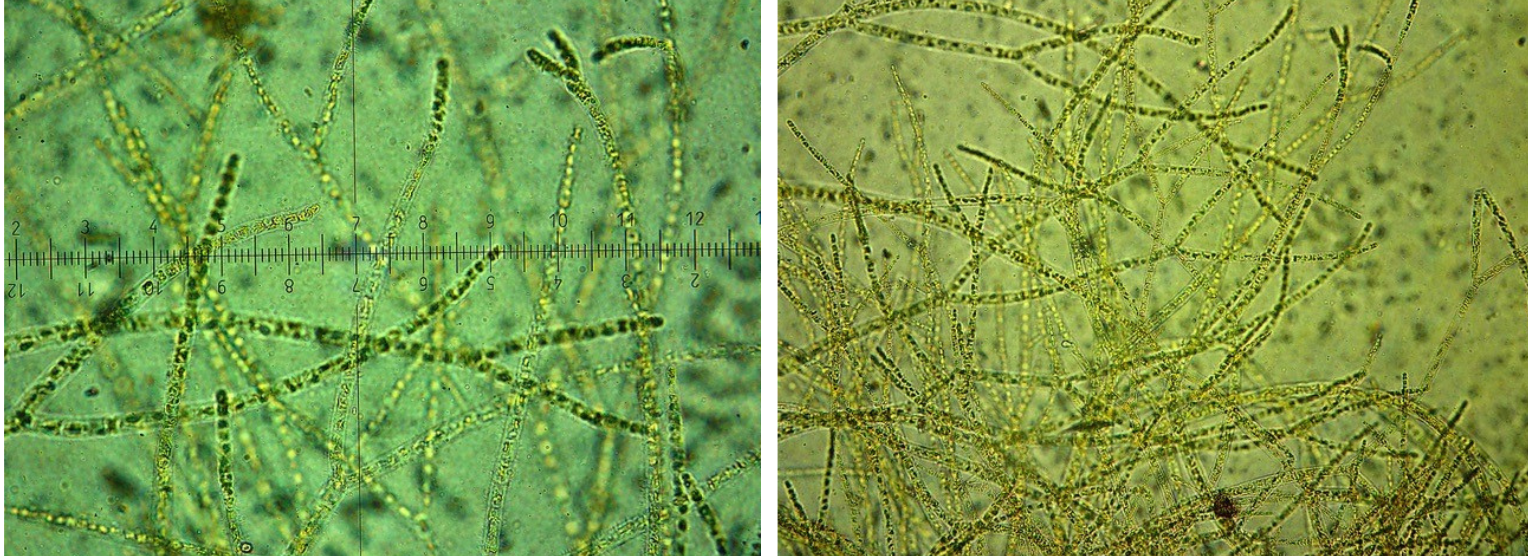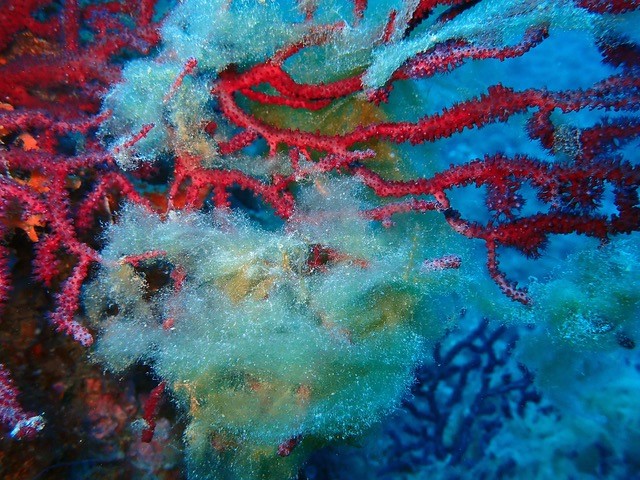In the tasks of monitoring the arrival of species introduced to the seabed of the Catalan coasts carried out by the Catalan Water Agency (ACA) in collaboration with the Center for Advanced Studies in Blanes (CEAB-CSIC), a new introduced algae has been detected for the first time in Catalonia and on the Spanish coasts at Punta Falconera, in the nature reserve of Cap de Creus, in the municipality of Roses.
The species in question is called Chrysonephos lewisii and is native to the Western Atlantic and the Caribbean. It is a Pelagophyceae , which is a class of very rare algae. This alga was already reported in certain places in the Mediterranean, in particular in Italy and the island of Corsica, but it had never been found in the Iberian Peninsula or the Balearic Islands.
The algae was detected in the marine reserve of Cap de Creus during an underwater survey carried out during the first week of September, where it was present between 3 and 30 meters deep, being particularly abundant at 20 meters deep, where it covered more of 50% of the seabed of the prospected area. The algae was also present in Es Gat, Cap Norfeu, which belongs to the Cap de Creus marine reserve.
A species difficult to eradicate
This alga forms very thin, golden filaments, which live attached to other algae but break and are carried away by the currents, accumulating in organisms of high structural importance such as the red gorgonia Paramuricea clavata .
The CEAB-CSIC researcher and head of the work team that carries out the tasks of controlling invasive species on the coast of Catalonia within the framework of the collaboration project between the ACA and the Center for Advanced Studies of Blanes, Enric Ballesteros, states that the introduced algae is an opportunistic, fast-growing species, but that it will predictably reduce its coverage in the coming weeks, with the arrival of autumn. This year’s bloom may have been aided by this summer’s unusually high temperatures, but there is no guarantee that this species is here to stay, even though it is an extremely difficult algae to eradicate . Any action in this regard would only increase its dispersion since the filaments are extraordinarily fragile.

Actions against invasive species
The ACA has been developing measures and actions for years following the entry of invasive species into the seabed of Catalonia, and also in continental waters. In the case of the marine waters of the Catalan coast, these measures correspond to the implementation of monitoring and control programs with the support of teams of specialists with the aim of identifying the introduced benthic species, and periodically evaluating the index of biopollution by invasive species in coastal water bodies.
Specifically, this year 2022, the ACA has awarded a new contract to the CEAB-CSIC with which, among other works, the identification and location of invasive species will be carried out in a minimum of 74 areas of the coast of Catalonia during a period three years old
Other outstanding results of the invasive species monitoring programs of the ACA carried out by the CEAB-CSIC in previous years have been the qualification of the state of coastal water bodies in relation to introduced species, the dispersion of relatively recently introduced species such as Caulerpa cylindracea or Womersleyella setacea, and monitoring the colonization and evolution of these species at specific points on the Catalan coast.





